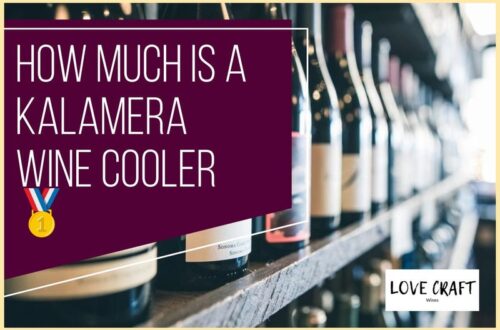If you’re a wine lover, there’s nothing worse than opening a bottle and discovering that it tastes terrible. You might wonder what went wrong and why the wine doesn’t taste as it should. The truth is, there are several reasons why wine can taste bad, and it’s essential to understand these factors to avoid disappointment.
Firstly, oxidation is a common cause of bad-tasting wine. This occurs when wine is exposed to air for too long, causing the wine to lose its fruity and fresh taste. The oxygen reacts with the wine’s components, creating a dull, flat taste.
Additionally, cork taint can also be a factor. A cork that’s infected with TCA (trichloroanisole) can taint the wine, giving it a musty and damp cardboard-like taste.
These are just a few reasons why wine can taste bad, and in this article, we’ll explore these reasons in more detail.
Table of Contents
Oxidation
You might be ruining your wine by leaving it open for too long, causing it to taste stale and unpleasant due to oxidation.
Oxidation occurs when the wine is exposed to air, leading to a chemical reaction that can alter the taste and flavor of the wine. The process of oxidation can change the color of the wine from bright and vibrant to brownish or yellowish. It can also reduce the aroma and flavor of the wine, making it less enjoyable to drink.
Preventing oxidation is crucial to maintaining the quality of your wine. You can do this by storing your wine in a cool, dark place, away from sunlight and heat. Once you open a bottle of wine, make sure to finish it within a few days to prevent oxidation. You can also use a wine stopper or a vacuum seal to keep the wine fresh and prevent air from entering the bottle.
Understanding the effects of oxidation on wine flavor can help you appreciate and enjoy your wine to its fullest potential.
Now, let’s move on to another reason why wine might taste bad – cork taint.
Cork Taint
If you’ve ever experienced the disappointment of opening a bottle of wine only to find it tastes like wet cardboard, you’ve likely fallen victim to cork taint – a frustrating reality that can leave you feeling like you’ve been sold a bill of goods.
Cork taint is caused by a chemical compound called TCA (2,4,6-trichloroanisole), which can contaminate the wine through the cork. The compound is formed when fungi come into contact with natural cork during wine storage.
Prevention measures include using synthetic corks or screw caps instead of natural cork, and also treating the cork with chemicals to prevent the growth of fungi.
Cork taint is a common problem in the wine industry, affecting around 3-5% of all bottled wine. It can be difficult to detect, as it doesn’t always manifest as an obvious musty smell or taste. However, if you do suspect that a wine has been affected by cork taint, it’s best to return it to the seller.
This is one reason why it’s important to store wine properly, as wine that is stored in damp or humid conditions is more likely to develop cork taint. Heat damage is another issue that can negatively impact the taste of wine, and we’ll look at that in the next section.
Heat Damage
Heat can have a detrimental impact on the flavor profile of your favorite bottle, causing it to taste less than optimal and potentially ruining the entire experience. Wine storage is crucial to maintaining the taste and quality of your wine, and temperature control is one of the most important factors to consider.
When exposed to high temperatures, the wine can become ‘cooked,’ resulting in flat, overripe, or stewed flavors. Heat damage can occur during any part of the wine’s journey, from transportation to storage, and even during consumption.
It’s essential to store your wine in a cool, dark environment, away from direct sunlight or heat sources. If you notice that your wine tastes off, it may be due to heat damage. Unfortunately, once the wine is exposed to high temperatures, there’s no way to reverse the damage, and the only solution is to avoid purchasing wine that has been exposed to heat.
This brings us to the next subtopic: overexposure to light.
Overexposure to Light
Did you know that leaving your wine exposed to light can also affect its taste? Wine storage is crucial in maintaining the quality of wine. One of the factors that can cause wine to taste bad is overexposure to light. This is why wine packaging is usually opaque or tinted to prevent light from penetrating the bottle.
When wine is exposed to light, the ultraviolet rays break down the organic compounds in the wine. This causes it to have a sour taste, commonly referred to as ‘lightstruck’ or ‘skunky’ wine. The more exposure to light, the more noticeable the off-flavors become. It’s important to store your wine in a cool, dark place, away from direct sunlight or fluorescent lights.
Overexposure to light is just one of the reasons why wine can taste bad. Another factor is poor quality grapes, which can lead to off-flavors and aromas in the wine. Let’s explore this next.
Poor Quality Grapes
Low-quality grapes can ruin the flavor and aroma of your beloved drink, leaving you with a disappointing and unpleasant experience. Grapes that are not harvested at the right time or are infected with fungi can lead to a wine that tastes sour, bitter, or even moldy.
Here are three reasons why poor quality grapes can affect the taste of your wine:
-
Fungal infections: Grapes that are infected with fungi can lead to a wine that tastes moldy or musty. Fungal infections can occur due to poor weather conditions or improper storage of the grapes. If the grapes aren’t treated in time, the fungi can spread and ruin the entire batch of wine.
-
Harvesting techniques: The timing of grape harvesting is crucial to the quality of the wine. If the grapes’re harvested too early, they may not have developed the right amount of sugar, leading to a wine that tastes sour. On the other hand, if the grapes’re harvested too late, they may have too much sugar, leading to a wine that tastes overly sweet.
-
Lack of ripeness: Grapes that aren’t fully ripe can lead to a wine that tastes tart or acidic. This can occur if the grapes’re harvested too early or if they’re grown in an environment that doesn’t provide the right conditions for ripening. It’s important to ensure that the grapes’re fully ripe before they’re harvested to ensure the best possible flavor and aroma in the wine.
Frequently Asked Questions
How does the type of grape affect the taste of wine?
Imagine sipping a velvety red wine that tastes like biting into a juicy blackberry. The type of grape used in making wine is one of the biggest factors that affects its taste.
Climate impact is a crucial variable as well, as the grapes need a specific amount of sunlight, water, and temperature to grow and flourish.
Soil composition is also essential, as it affects the grapes’ nutrients and flavors. For instance, grapes grown in volcanic soil produce a wine with a mineral taste, while those grown on limestone soil have a more floral flavor.
Understanding these factors can help you choose the perfect wine to complement your meal or occasion.
Can the shape of the wine glass affect the taste of wine?
When it comes to wine, the shape of the glass can actually have a significant impact on the flavor perception.
This is because the shape of the glass affects the relationship between the wine and the air, which can alter the aroma and taste of the wine.
For example, a wider bowl-shaped glass can help to enhance the aroma of red wines while a narrower, flute-shaped glass can help to preserve the bubbles in sparkling wines.
So, if you’re looking to truly savor the flavor of your wine, it’s worth considering the shape of your glass before you pour.
Can drinking wine from a bottle that has been open for a long time cause it to taste bad?
You’ve been saving that bottle of wine for a special occasion, but when you finally open it, the taste is off. What happened?
It’s likely that the wine has undergone oxidation. Wine oxidation occurs when wine is exposed to air, causing it to lose its flavor and aroma.
The shelf life of wine after opening is typically only a few days to a week, depending on the type of wine and how it’s stored. If you’ve been drinking from a bottle that has been open for a long time, it’s possible that the wine has gone bad due to oxidation.
To avoid this, store your wine properly and consume it within a reasonable amount of time after opening.
Can the temperature at which wine is stored affect its taste?
To ensure that your wine tastes its best, it’s important to pay attention to the temperature at which it’s stored and served.
Wine storage temperature can greatly affect the taste of your wine. If it’s stored at too high of a temperature, it can spoil, while storing it at too low of a temperature can cause it to lose its flavour.
Additionally, serving temperature is just as important as storage temperature. Red wines should be served slightly below room temperature, while white wines should be served chilled.
By paying attention to wine storage and serving temperatures, you can ensure that your wine tastes its best and avoid any unpleasant flavours.
Are certain food pairings more likely to make wine taste bad?
When it comes to wine, food pairing effects can greatly impact taste perception. Certain foods can enhance the flavors of a wine, while others can completely overpower it and make it taste bad.
For example, pairing a bold red wine with delicate fish can result in a clash of flavors that leaves a bad taste in your mouth. Similarly, pairing a sweet dessert wine with a savory dish can also be a recipe for disaster.
It’s important to consider the flavors and intensity of both the food and wine when pairing them together to ensure a harmonious and enjoyable taste experience.
Conclusion
So, now you know why wine can taste bad. If you’ve ever had a bad glass of wine, it’s likely due to one of these five reasons:
- oxidation
- cork taint
- heat damage
- overexposure to light
- poor quality grapes
Think of wine like a delicate flower – it needs to be treated with care and attention to maintain its beauty and flavor.
Just like a flower can wilt from too much heat or not enough water, wine can lose its taste and aroma from improper storage or handling.
So next time you’re enjoying a glass of wine, take a moment to appreciate the effort that went into making it and consider how it was stored and treated before it reached your glass. Cheers!





